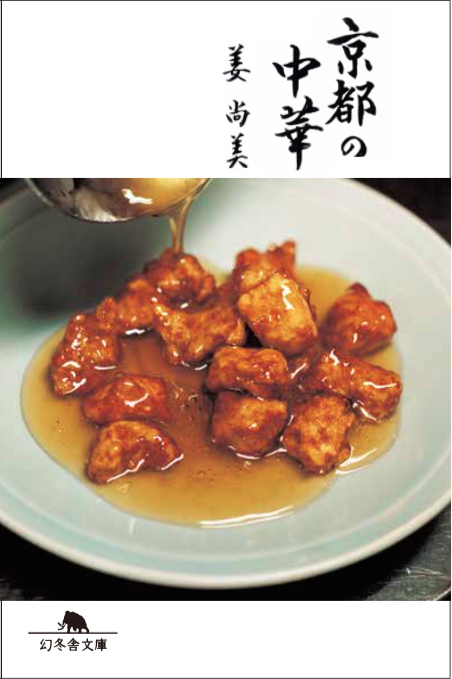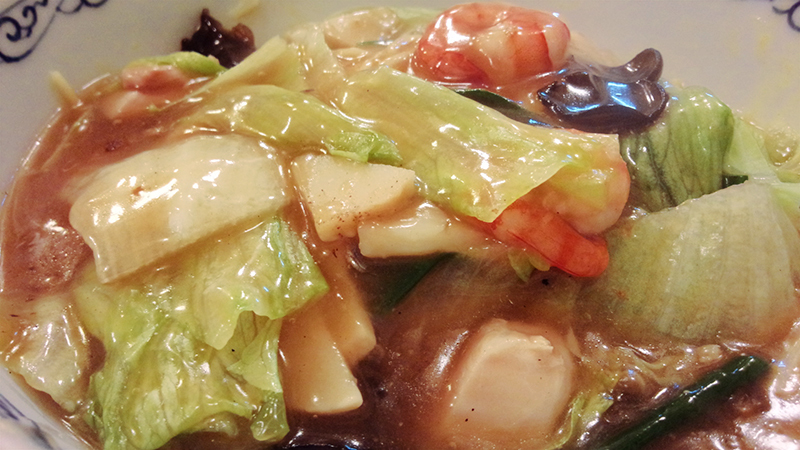
Kani-san during his student days
Natsumi Kani, a copywriter active in Osaka, worked part-time at a Chinese restaurant in Kyoto during her art college days. Though Kani had told me, "Kyoto actually has surprisingly good local Chinese restaurants," my limited stomach was already stretched thin enjoying saba sushi, herring soba, rich, thick ramen, and the city's abundant beef culture. She rarely had the chance to try them. But perhaps because her words lingered in her mind, she happened to pick up the book 'Kyoto's Chinese Cuisine' (Gentosha Bunko) at a bookstore.
This book carefully translates the accumulated sensory experiences of Kyoto locals into words through meticulous research. For instance, it describes the defining characteristic of Kyoto Chinese cuisine as a "subtle flavor." Since bringing strong odors into tatami rooms or artisan workshops was strictly forbidden, ingredients like garlic and pungent spices were avoided. Given the region's excellent water quality, rather than boiling Chinese ham or pork bones for a rich broth, many shops extract a clear, refined dashi from high-quality kombu and chicken bones. The work feels effortless, yet is actually very labor-intensive. The interior is always immaculately clean. The book unravels the essence of this "quiet flavor" by introducing such facts.

Recently, I had the chance to visit Kansai, so I promptly visited several shops. "Karashi Soba" is a dish where boiled Chinese noodles are tossed in mustard soy sauce and topped with a generous sauce containing shrimp, chicken, lettuce, and green onions. The moment you dip your chopsticks in to mix, the rising steam hits you with a pungent aroma so sharp it makes you choke. Yet, when you taste it, the overall flavor is light, and it goes down smoothly.
Speaking of mustard, "Karashi Chicken" (sometimes "Karashi Miso" depending on the shop) was another unusual menu item. It features fried chicken topped with a sauce that has a soft sourness and a spicy kick from chili peppers. Harumaki (rolled omelets) also stood out, with their fragrant, savory egg wrappers generously filled with shredded bamboo shoots. Each dish evoked a "This feels nostalgic!" sensation, yet upon reflection, it was a flavor I'd never actually experienced before.
I once researched Chinese cuisine and regional preferences as part of a project for a food company. Nagoya prefers rich, hatcho miso-style flavors even in Chinese food. Kyushu has blurred boundaries between local dishes like "mizutaki," "chikuzen-ni," and "sara udon" and Chinese cuisine. Hokkaido is known for its brown "ankake" sauce. Oh yes, whether Eight Treasure Vegetable is white or brown varies by region. Mabo tofu—silken or firm tofu? The sauce for crab omelette—red or white? We even debated such major issues. (laughs) While Kanto often uses slightly upscale Chinese restaurants for occasions like memorial services, Chinese cuisine in Kansai feels more familiar and integrated into daily life. That was the gist. This time, with the book 'Kyoto's Chinese Cuisine' in hand, I actually ate these dishes and truly experienced Chinese food blended into Kansai-style living. 
Meanwhile, the book's "Afterword" includes this note:
To all advertising agency and magazine editors who pick up this book: Please do not abbreviate "Kyoto no Chuka" to "Kyoto Chuka" and turn it into a hashtag. Rather than visiting every single restaurant featured here just to spout trivia like "See how light this is? It's from the hanamachi district..." please cultivate genuine connections – the kind where you visit a place because a friend lives nearby, making it an essential part of your Kyoto visits.
This is a rather uncomfortable truth. The strength of advertising agencies lies in their ability to verbalize the intangible (as Ms. Kang Sang-mi, author of Kyoto no Chuka, has done). They have often leveraged such language to spark trends and expand business. However, the act of putting things into words should inherently serve greater purposes—such as preserving culture or creating entirely new forms of it.
Words possess the power to move people. Without sufficient awareness of this power, we risk merely "consuming" that culture and leaving it at that.
I want to quietly, discreetly, and steadily build a long-term relationship with the Chinese restaurant in Kyoto I visited this time. And every time that menu comes to mind, I want to remember the "responsibility to put things into words."
Please, enjoy your meal!









